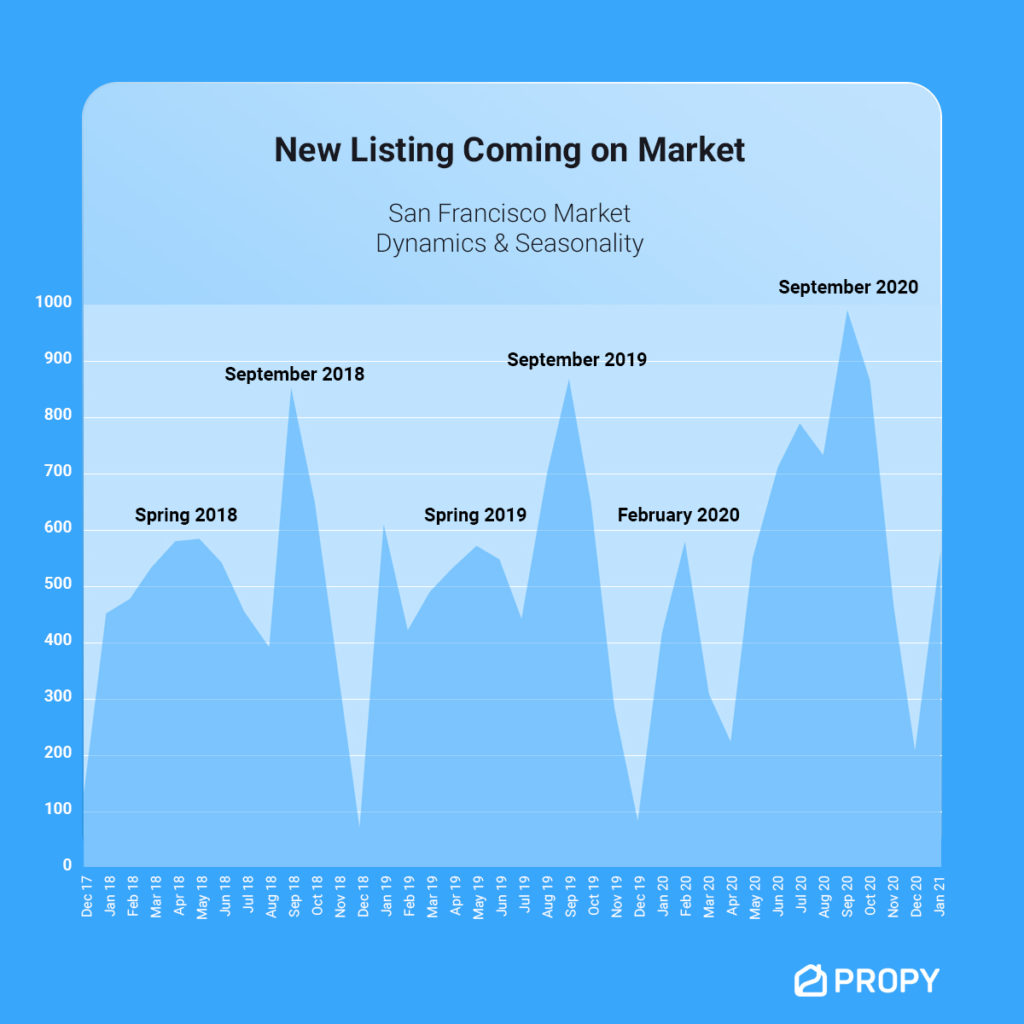
My family and I are in the market for a new house in the SF Bay Area. Shopping for a house during COVID is a whole story unto itself, with the PEAD release forms you have to sign each time you want to see a house, the scheduled viewing times, and notes left behind reminding you to lather up as you enter, bottles of Purell adjacent.
But there are interesting things going on in the market that have drawn my attention, and that data can help to explain. I am writing about the Bay Area and have a few data points to support my points. But I want to hear from you and your experiences, no matter where you might live or work.
A few facts about housing in SF and the Bay Area since Jan. 2021
1. There is very little inventory
As soon as the pandemic hit a year ago, inventory skyrocketed, especially for condos. People who had already been considering selling likely panicked, and tried to get out of their homes quickly. Couple that with no one interested in buying due to such uncertainty, and the average home sat on the market for over 45 days, which is unheard of for the Bay Area. But that has changed dramatically over the past 3 months. Demand has caught up with supply big time, which means rising prices and multiple offer scenarios. In the Bay Area, in many of the more desirable neighborhoods, homes are now sitting on the market for 22 days.
The graph below shows San Francisco specifically, but the same is true for the Bay Area overall. Seasonality aside, listings surged and then plummeted. The result? Offers are piling up on certain homes.

2. No Looky Loos here!
COVID has eliminated the Sunday open house, unfortunately. The work around for the real estate industry has been that interested buyers have to jump through a few fairly inconvenient hoops in order to get in to see a property. PEAD (Property Entry and Advisory) forms and scheduled viewings have brought out only the most serious of home shoppers. People who like to view homes the way that people like to go antiquing doesn’t exist these days, so anyone who spends the time to fill out those pesky forms and make an appointment to see a property is serious. And in the Bay Area, it’s difficult to find open viewing times. Lots of serious buyers out there!
3. Buyers have to make “clean” offers
For obvious reasons of supply and demand, sellers these days hold most of the cards. This means that buyers are having to waive all contingencies, including pest, home, loan, and appraisal. A contingency basically means “as long as,” and it gives the buyer some protection. So, a pest inspection contingency means that the buyer will buy the property as long as the pest inspection report comes back clean; or in the case of loan contingency, the buyer agrees to buy the house as long as they qualify for a loan after the purchase agreement is signed by both parties and the property goes into contract. Contingencies give buyers the freedom to back out of a deal without penalty, provided that backing out is done within the timeframe allotted in the contingency. In addition, contingencies give buyers more leverage. If a pest inspection report shows that there is $5,000 worth of damage in the basement due to termites, the buyer will often request from the seller a credit in that amount. When markets are hotter, though, buyers generally waive contingencies, because demand for a house or condo is higher, and the seller will always choose the best dollar offer that has the fewest contingencies.
I am really eager to hear what is going on in your part of the country. Please connect with my company, Propy, on LinkedIn, Facebook, or Instagram.






